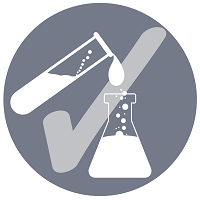Back
Formulation and Delivery – Chemical
Session: Symposium: Evolution in Patient-Centric Drug Formulation and Delivery (CE)
Novel Approaches for Evaluating Bioavailability of Topical Dermatological Drug Products
Wednesday, October 19, 2022
10:00 AM – 10:30 AM ET
Location: 205 AB

Tannaz Ramezanli, PhD
Pharmacologist
US Food and Drug Administration
Silver Spring, Maryland
Government Speaker(s)
The proposed talk will cover new and efficient alternative approaches demonstrating the BE of complex topical dermatological drug products. These approaches have either been recently developed and are currently recommended, or are being explored by the U.S. Food and Drug Administration (FDA).
The talk will focus on a novel BE assessment strategy for topical dermatological drug products that is based on measuring that the rate and extent (cutaneous pharmacokinetics) of drug bioavailability at or near the site(s) of action. The techniques for this approach include using dermal interstitial fluid sampling techniques (e.g., dermal open flow microperfusion and dermal microdialysis), advanced confocal Raman imaging techniques, and other computational tools. This patient-centric BE assessment strategy would evaluate whether the test and reference topical products are clinically bioequivalent even when they are not necessarily identical, but are similar in component, composition and physical and structural quality attributes.
The talk will focus on a novel BE assessment strategy for topical dermatological drug products that is based on measuring that the rate and extent (cutaneous pharmacokinetics) of drug bioavailability at or near the site(s) of action. The techniques for this approach include using dermal interstitial fluid sampling techniques (e.g., dermal open flow microperfusion and dermal microdialysis), advanced confocal Raman imaging techniques, and other computational tools. This patient-centric BE assessment strategy would evaluate whether the test and reference topical products are clinically bioequivalent even when they are not necessarily identical, but are similar in component, composition and physical and structural quality attributes.
Learning Objectives:
- Compare and contrast the leading strategies for developing specific classes of generic topical products
- Explain the benefits and challenges associated with each bioequivalence strategy for topical product
- Overcome some of the challenges associated with demonstrations of BE for complex topical products, and other locally acting complex products.


